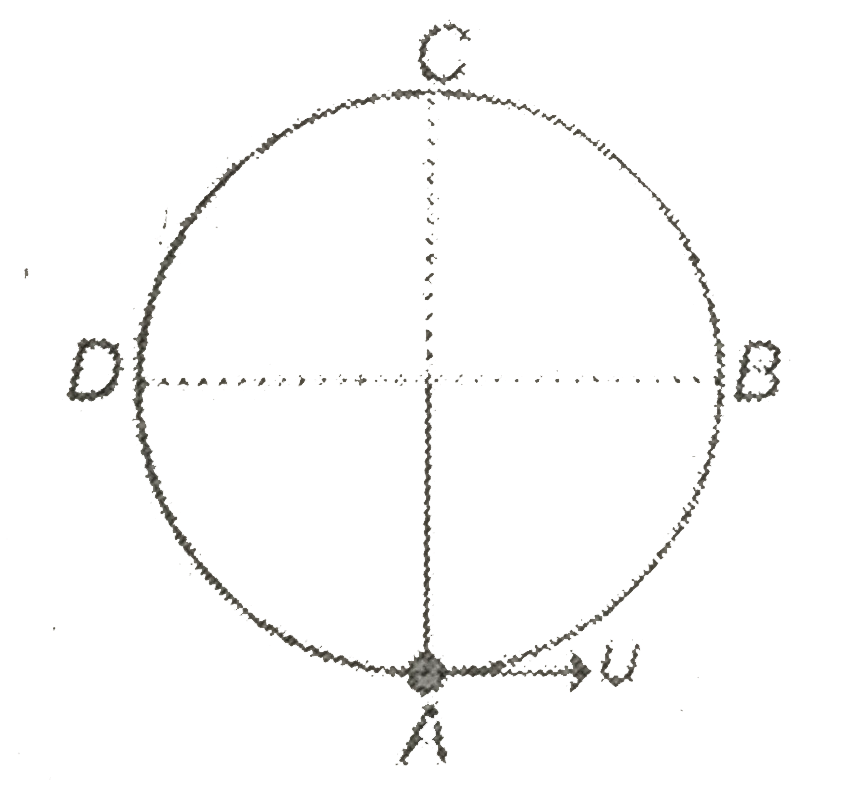Match the following.
The correct Answer is:A, B, C, D
To solve the matching question, we need to determine the dimensional formulas for each of the properties listed in Table 1 and match them with the corresponding options in Table 2.
1. Coefficient of Viscosity (A):
- The coefficient of viscosity (η) is defined as the ratio of shear stress to shear rate.
- Its dimensional formula can be derived as follows:
- Shear stress = Force/Area = (M L T^(-2)) / (L^2) = (M L^(-1) T^(-2))
- Shear rate = Velocity/Distance = (L T^(-1)) / (L) = (T^(-1))
- Therefore, the dimensional formula of viscosity is:
Viscosity=Shear StressShear Rate=(ML−1T−2)(T−1)=(ML−1T−1)
- Since this option is not available in Table 2, we match A with S (None).
2. Surface Tension (B):
- Surface tension (σ) is defined as force per unit length.
- Its dimensional formula is:
Surface Tension=ForceLength=(MLT−2)(L)=(ML0T−2)
- Therefore, we match B with Q.
3. Modulus of Elasticity (C):
- The modulus of elasticity (E) is defined as stress over strain.
- Its dimensional formula can be derived as follows:
- Stress = Force/Area = (M L T^(-2)) / (L^2) = (M L^(-1) T^(-2))
- Strain is dimensionless.
- Therefore, the dimensional formula of modulus of elasticity is:
Modulus of Elasticity=StressStrain=(ML−1T−2)
- Thus, we match C with R.
4. Energy per Unit Volume (D):
- Energy per unit volume can be defined as energy divided by volume.
- Its dimensional formula is:
Energy=(ML2T−2),Volume=(L3)
- Therefore, energy per unit volume is:
Energy per Unit Volume=(ML2T−2)(L3)=(ML−1T−2)
- Since this option is not available in Table 2, we match D with P.
Final Matching:
- A → S (None)
- B → Q ((M L^{0} T^{-2}))
- C → R ((M L^{-1} T^{-2}))
- D → P ((M L^{-1} T^{-2}))
- The coefficient of viscosity (η) is defined as the ratio of shear stress to shear rate.
- Its dimensional formula can be derived as follows:
- Shear stress = Force/Area = (M L T^(-2)) / (L^2) = (M L^(-1) T^(-2))
- Shear rate = Velocity/Distance = (L T^(-1)) / (L) = (T^(-1))
- Therefore, the dimensional formula of viscosity is:
Viscosity=Shear StressShear Rate=(ML−1T−2)(T−1)=(ML−1T−1)
- Since this option is not available in Table 2, we match A with S (None).
- Surface tension (σ) is defined as force per unit length.
- Its dimensional formula is:
Surface Tension=ForceLength=(MLT−2)(L)=(ML0T−2)
- Therefore, we match B with Q.
- The modulus of elasticity (E) is defined as stress over strain.
- Its dimensional formula can be derived as follows:
- Stress = Force/Area = (M L T^(-2)) / (L^2) = (M L^(-1) T^(-2))
- Strain is dimensionless.
- Therefore, the dimensional formula of modulus of elasticity is:
Modulus of Elasticity=StressStrain=(ML−1T−2)
- Thus, we match C with R.
- Energy per unit volume can be defined as energy divided by volume.
- Its dimensional formula is:
Energy=(ML2T−2),Volume=(L3)
- Therefore, energy per unit volume is:
Energy per Unit Volume=(ML2T−2)(L3)=(ML−1T−2)
- Since this option is not available in Table 2, we match D with P.
- A → S (None)
- B → Q ((M L^{0} T^{-2}))
- C → R ((M L^{-1} T^{-2}))
- D → P ((M L^{-1} T^{-2}))
Topper's Solved these Questions
- PROPERTIES OF MATTERBOOK - DC PANDEY ENGLISHCHAPTER - PROPERTIES OF MATTEREXERCISE - Integer
8 Videos
- PROPERTIES OF MATTERBOOK - DC PANDEY ENGLISHCHAPTER - PROPERTIES OF MATTEREXERCISE - Comprehension
32 Videos
- PROJECTILE MOTIONBOOK - DC PANDEY ENGLISHCHAPTER - PROJECTILE MOTIONEXERCISE - Level - 2 Subjective
10 Videos
- RAY OPTICSBOOK - DC PANDEY ENGLISHCHAPTER - RAY OPTICSEXERCISE - Integer type q.
14 Videos
Similar Questions
Match the following
Table-1Table-2(A)L(P)[M0L0T−2](B)Magnetic Flux(Q)[ML2T−2A−1](C)LC(R)[ML2T−2A−2](D)CR2(S)None
View SolutionMatch the following
∣∣ ∣ ∣ ∣ ∣ ∣ ∣∣Table-1Table-2(A)Stress×Strain(P)J(B)YAl(Q)N/m(C)Yl3(R)J/m3(D)FlAY(S)m∣∣ ∣ ∣ ∣ ∣ ∣ ∣∣
View SolutionColumn IColumn II(A)Electrical resistance(p)[M−1L−2T4A2](B)Capacitance(q)[ML2T−2A−2](C)Magnetic field(r)[ML2T−3A−2](D)Inductance(s)[MT−2A−1]
View SolutionA particle is suspended from a string of length R. It is given a velocity u=3√gR at the bottom

Match the following
Table-1Table-2(A)Velocity at B(P)7 mg(B)Velocity at C(Q)√5gR(C)Tension in string at B(R)√7gR(D)Tension in string at C(S)5 mg(T)None
View SolutionA particle is suspended from a string of length R. It is given a velocity u=3√gR at the bottom

Match the following
Table-1Table-2(A)Velocity at B(P)7 mg(B)Velocity at C(Q)√5gR(C)Tension in string at B(R)√7gR(D)Tension in string at C(S)5 mg(T)None
View SolutionMatch the following columns.
Column IColumn IIA.Teslap[ML2A−2T−2]B.Weberq[MLA−2T−1]C.Weber m−2r.[MA−1T−2]D.Henrys.None
View SolutionList-IList-2(a)Pressure (e)ML2T−2I−1(b)Latent heat(f)M0L0T−1(c)Velocity gradient(g)ML−1T−2(d)Magnetic flux(h)M0L2T−2
View SolutionMatch the following
Table - 1Table - 2(A)σ2/ε0(P)C2/J−m(B)ε0(Q)Farad(C)ampere - secondVolt(R)J/m3(D)VE(S)metre
View SolutionMatch the following
∣∣ ∣ ∣ ∣ ∣ ∣ ∣ ∣ ∣∣ Table-1 Table-2(A) Steel(P) Young's modulus of elasticity(B) Water(Q) Bulk modulus of elasticity(C) Hydrogen gas filled(R) sheer modulus of in a chamber elasticity∣∣ ∣ ∣ ∣ ∣ ∣ ∣ ∣ ∣∣
View SolutionMatch the following two columns.
Column IColumn IIA.Electrical resistance1.[ML3T−3A−2]B.Electrical potential2.[ML2T−3A−2]C.Specific resistance3.[ML2T−3A−1]D.Specific conductance4.None
View Solution
